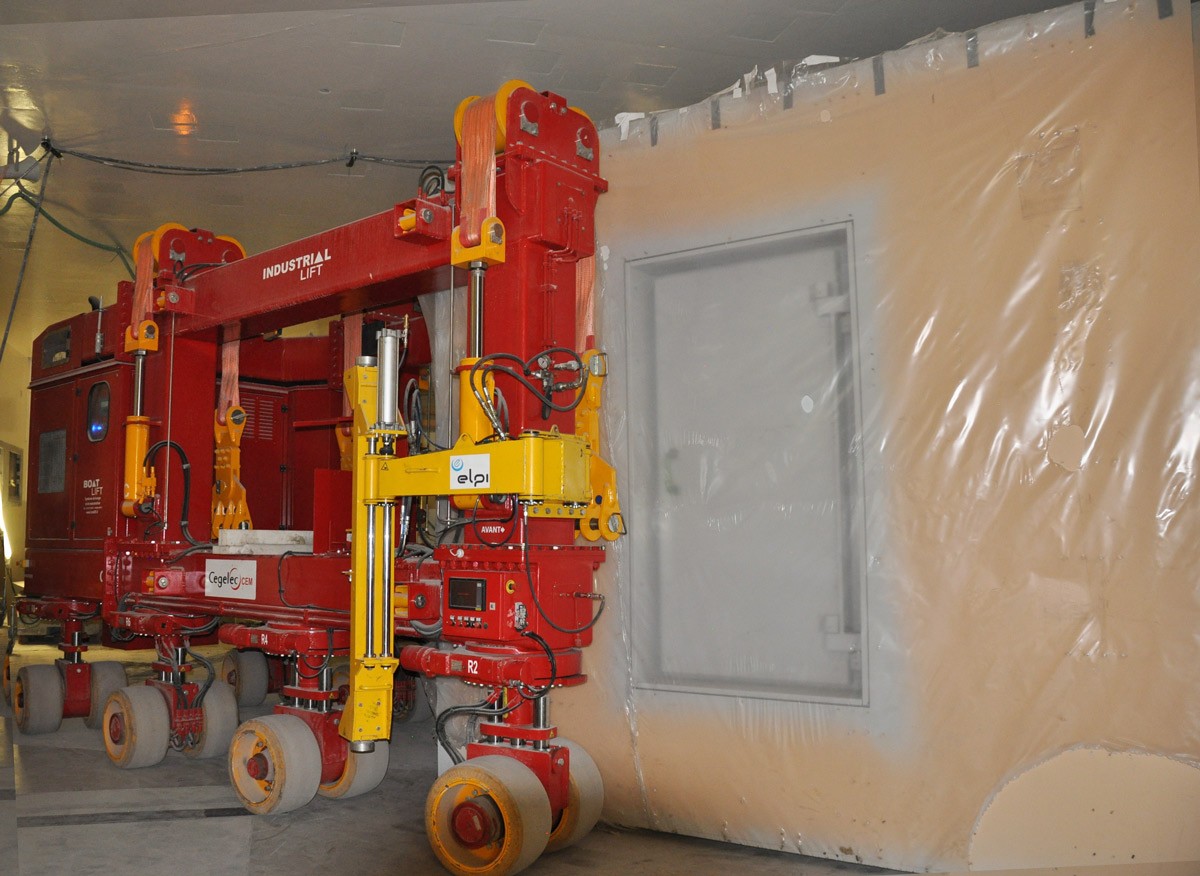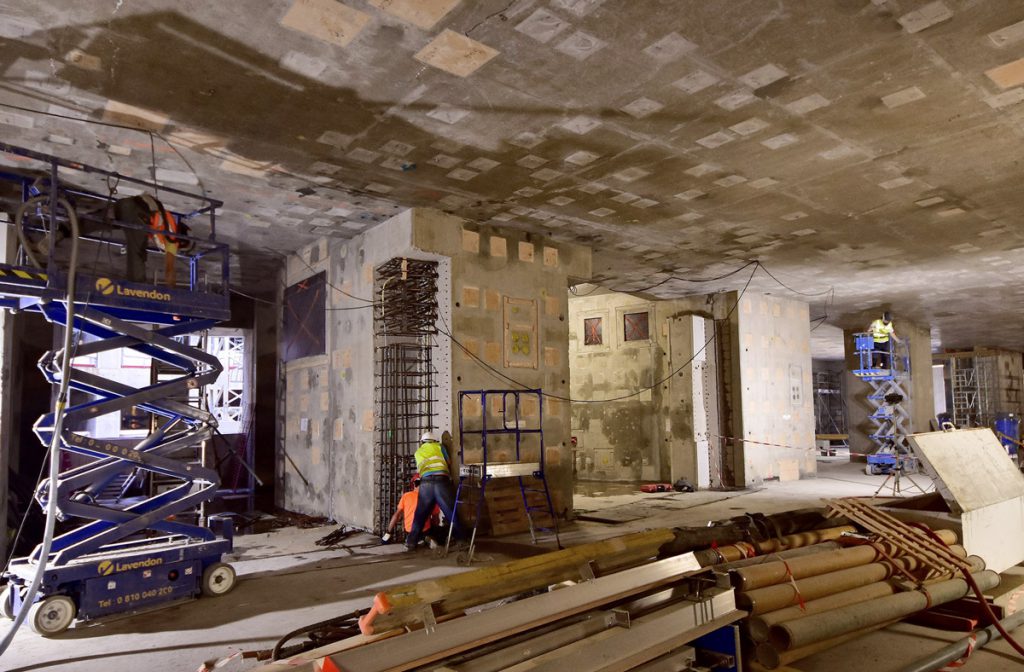All port cell doors installed inside the ITER castle

The special industrial lift which was used to install the heavy port cell doors in the Tokamak building, ITER site, June 2020. The tool was designed by Cegelec, subcontractor of the Vinci Ferrovial Razel Bec (VFR) consortium which is collaborating with F4E.
The installation of the first heavy component—the lower part of the cryostat—in the Tokamak building earmarked the beginning of a new phase for the ITER project. The assembly of the biggest fusion device had officially started. Europe and the companies involved in the construction of the main edifice delivered on time making this step possible.

And while the focus is shifting on the pieces of equipment arriving on-site like the magnets from Europe and Japan or the first sector of the vacuum vessel from Korea, one must not lose sight of the progress made in civil engineering works. The cladding of the Tokamak building is completed and teams have finished painting its walls and slabs inside the gigantic Crane Hall. Recently, however, F4E in collaboration with the Vinci Ferrovial Razel-Bec consortium, and their subcontractors Cegelec, and Sommer, celebrated another achievement: all 46 port cell doors were fitted.
In order to confine the ITER machine from the rest of the building and comply with the strict requirements of confinement and radioprotection, a total of 46 doors had to be produced. These doors can provide access for assembly or maintenance works during operation. Think of them as “barriers” located on various levels of the castle that hosts the ITER device. Level B1 counts 18 doors, L1 and L2 count 14 doors each. The design of the doors, which started towards the end of 2013, proved to be the most complex part of the process because these are no ordinary nuclear doors. They are nearly 80 cm thick and measure 4 x 4 m. Initially, a prototype was designed and tested. Following the successful safety acceptance tests, their manufacturing started in January 2017 and their installation in July 2018.

Their production was partly carried out in the factory and partly on the ITER site. Here’s why: once the thick metallic frames, which weigh 39 t each, were delivered on-site, an additional 28 t of thick density concrete was poured in them raising their load to 67 t. With the help of a temporary lift they were delivered to the different floors of the Tokamak building. Their installation was performed by a special hydraulic tool, resembling to a mini crane managed by an operator. With extremely precise and delicate movements it lifted and inserted the heavy doors in their designated space.
“The completion of the port cell doors installation is another example of Europe’s commitment to keep up the pace of the civil engineering works in order to facilitate the ITER Organization with the assembly and installation of further components,” explains Romaric Darbour, F4E Deputy Programme Manager for “Buildings, Infrastructure and Power Supplies.” Works in the Tokamak building are expected to resume in 2021.